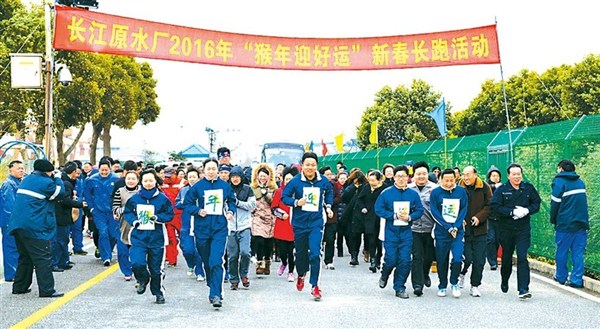今日上海
宝山,缔造健康城市生活 - 2016年11月25日
Baoshan efforts bolster public health across district

THE 9th Global Conference on Health Promotion will draw to a close tomorrow in Shanghai.
Today, the third day of the event, nearly 1,000 conference attendees divided into 16 groups, each of which toured one of Shanghai’s districts, including Baoshan.
Baoshan prepared three itineraries for visiting guests. Each itinerary included a visit to one community, one school and one enterprise; with stops at historical and cultural sites along the way.
As one of Baoshan’s three participating communities, Jiajun Huayuan in Songnan Town established its own self-managed health program among senior residents in 2009. The neighborhood initiative now has 103 members with an average age of 63.
Members of the program receive a variety of health promotion services as well as both modern and traditional Chinese medical treatments. They do physical exercises that vary by season, practice food therapy and receive regular personalized health treatments. The campaign has plans to expand its membership to let more local residents join such activities.
Also in the district, the Wenshui Road outlet of furniture and décor store Redstar Macalline has launched work-place anti-smoking and weight-control initiatives to promote health and wellness among its employees.
At Baoshan Experimental Primary school, students spend an hour each day doing physical exercise. Each pupil is required to master a fitness skill and practice it regularly. The school also has projects to prevent, correct and treat myopia and other vision problems.
Broad focus on wellness
Starting in 2003, Baoshan started its “healthy city” initiative with an aim to turn itself into an urban area marked by innovation, harmony, greenery, openness and sharing.
A healthy environment, society and people are what the district is pursuing. Baoshan has accelerated the improvement and expansion of its urban functions in recent years with an eye to health promotion.
Economic restructuring efforts have also led to improvements in urban and rural areas of the district. The Wusongkou International Cruise Terminal is a major example of the transformations that have taken place in former industrial zones.
At the terminal, three kilometers of riverside promenade have replaced decrepit factories and shipyards. The construction of new residential areas and the renovation of older communities as well as the construction of “beautiful villages” have greatly improved local living conditions.
At the same time, Baoshan has established a three-level medical network with the participation of district-level hospitals, community health centers and service stations within easy walking distance of local communities. Local residents can enjoy safe, efficient, high-quality and low-price healthcare services at these centers. A referral system between nursing homes and hospitals has also been established.
District authorities also created a management system and introduced the latest technology to monitor food production and distribution in a bid to eliminate food safety hazards. Over the past five years, no such incidents have taken place in the district.
Among other milestones in public health promotion, Baoshan started to fully implement the Shanghai Regulations on Control of Smoking in Public Places in 2010.
By the end of last year, more than 30,000 local residents have joined health self-management campaigns.
The average life expectancy in the district was 82.44 years last year. Looking ahead, efforts to improve health and wellbeing are expected to raise average longevity by one year every five years.
The maternal mortality rate has consistently been at zero, while the infant mortality rate is below 5 per thousand.
The incidence of infectious diseases in the district is also below the city average level, demonstrating the momentum behind the district’s efforts to promote health.
